Pro Nets Technology WA25R WIRELESS ADSL 2 PLUS Router User Manual
Pro-Nets Technology Corporation WIRELESS ADSL 2 PLUS Router
User manual

Wireless ADSL2+ Router Installation Guide
1. Panel Illustration ....................................................................................... 1
1.1 Wireless ADSL2+ Router Front Panel Indicators and Descriptions ......1
1.2 Back Panel.................................................................................................1
2. Package Contains ..................................................................................... 2
3. Hardware Installation ................................................................................ 2
4. Wireless ADSL2+ Quick Setup Procedure .............................................. 3
4.1 Quick Setup..................................................................................... 3
4.2 Quick Setup for “Other” ................................................................. 6
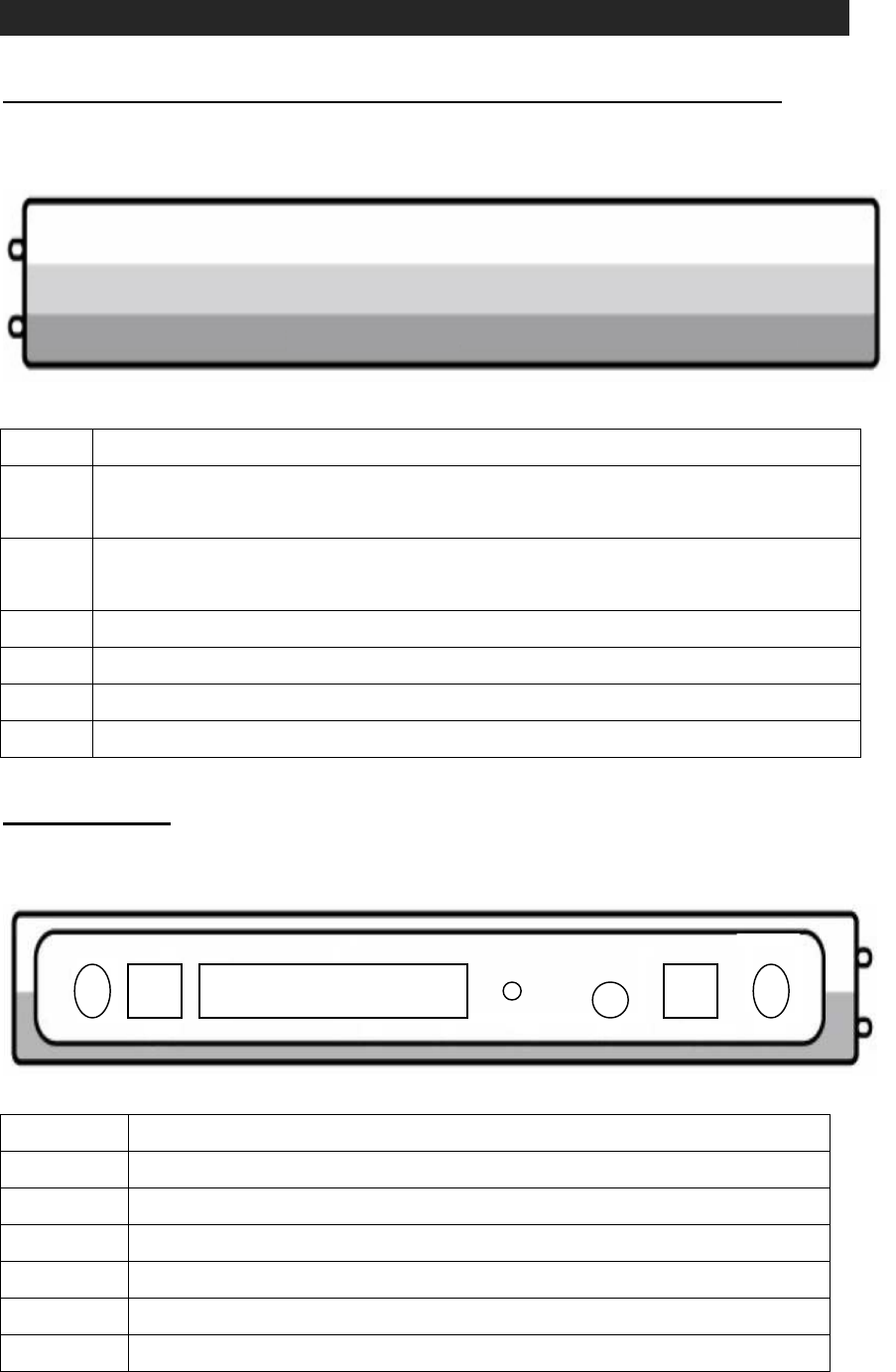
1
1. Panel Illustration
1.1 Wireless ADSL2+ Router Front Panel Indicators and Descriptions
Place the Router in a location that permits an easy view of the LED indicators shown in the
front panel.
Descriptions of LED status
PWR When an active power adapter is connected with router, this LED will light up.
WLAN
When WLAN card installed properly, this LED will be flashing. When transferring
data,
the LED will be steadily.
ADSL When connection with Internet (ADSL Connected) is established, this LED will light up.
When this LED is flashing: NO ADSL physical connection
X1 When port 1 connection with end user is established, this LED will light up.
X2 When port 2 connection with end user is established, this LED will light up.
X3 When port 3 connection with end user is established, this LED will light up.
X4 When port 4 connection with end user is established, this LED will light up.
1.2 Back Panel
The back panel of the Router provides access to the power adapter cord connection as
well as the port connections.
Descriptions of All Connectors
LINE Connect with phone cable
RESET Reset button. Reset the setting to default.
4x Connect with Ethernet Cable to Switch Hub or PC
3x Connect with Ethernet Cable to Switch Hub or PC
2x Connect with Ethernet Cable to Switch Hub or PC
1x Connect with Ethernet Cable to Switch Hub or PC
DC IN Connect to DC Power Adapter
4 3 2 1 ADSL WLAN WPS PWR
LINE
1 2 3 4 RESET
DC IN
WP SW

2
2. Package Contains
Open the shipping carton and carefully remove all items. In addition to this quick
installation guide, ascertain that you have:
One Wireless ADSL2+ Router
One telephone cable (RJ11)
One Ethernet cable (RJ45)
One CD
One power adapter
3. Hardware Installation
This section discusses the cable connections you will need to make in order to use the
router. When selecting the location for the router, allow room to access the router so that you can
see the LED indicators on the front panel.
It may be convenient for you to locate the router near the PC that you intend to use for
initial configuration of the router
1) Connect Router to LINE
Plug the provided RJ-11 phone cable into LINE port on the back panel of the router
and insert the other end into splitter or wall phone jack.
2) Connect Router to LAN
Plug RJ-45 Ethernet Cable into LAN port on the rear panel of the router and insert the
other end of the Ethernet cable on your PC’s Ethernet port or switch / hub.
3) Connect Router to Power Adapter
Plug Power Adapter to DC IN port on the rear panel of the router and the other end to
a power outlet.
Warning! Only use the power adapter provided in the package, otherwise it may cause
hardware damage.
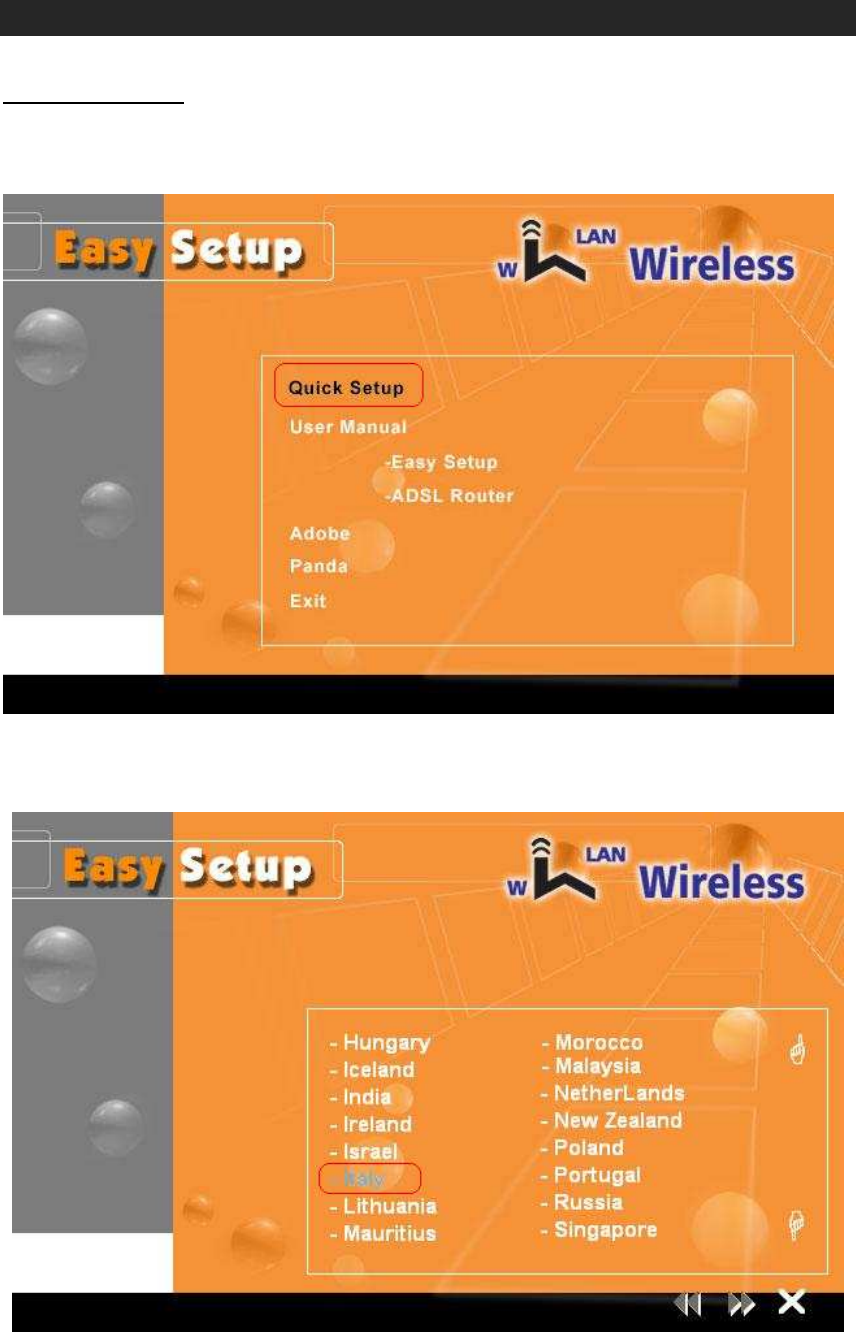
3
4. Wireless ADSL2+ Quick Setup Procedure
4.1 Quick Setup
Step 1: Insert the provided CD into CD drive and the window below will be shown, and then click
“Quick Setup” to configure the router.
Step 2: Select the country when setup window appears.
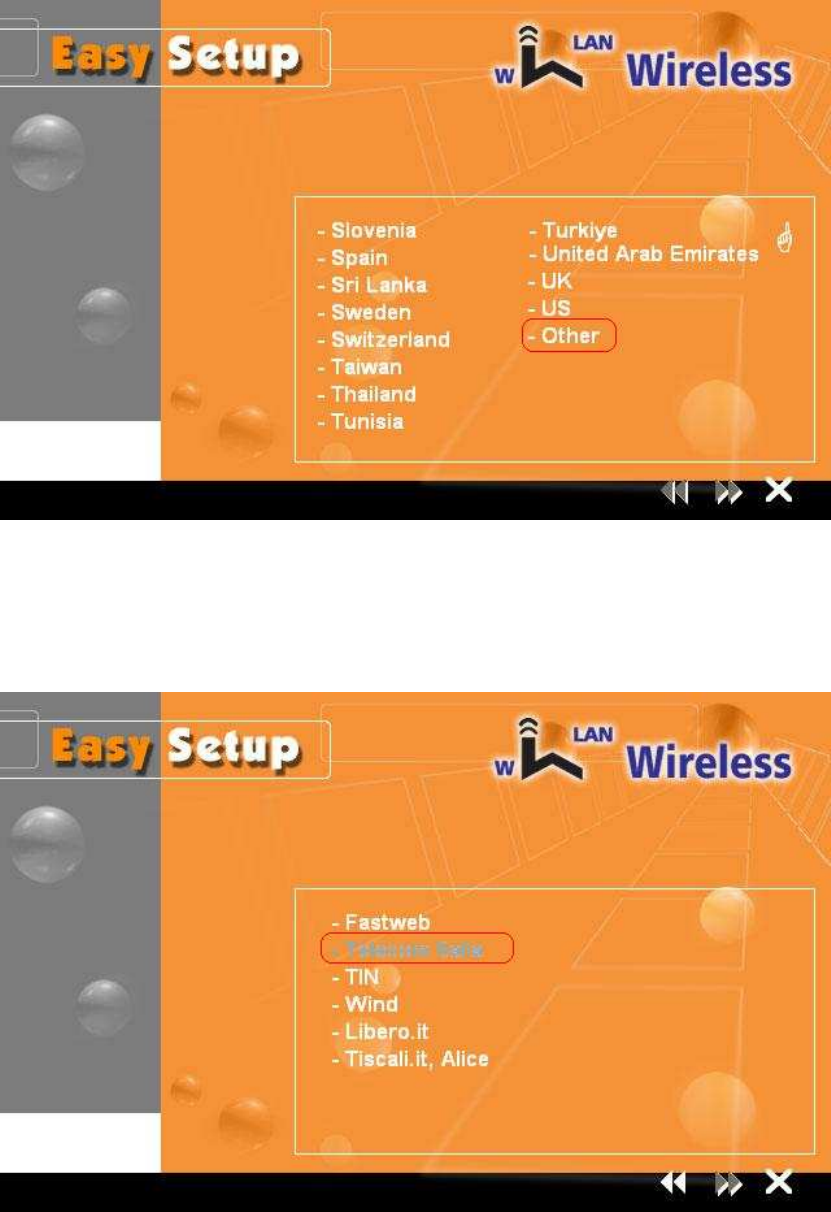
4
Step 3: If your country is not on the list, please click
“
”
to next page and select “Other”.
Step 4: After you select the country selection, the window below will appear, and then select the
ISP.
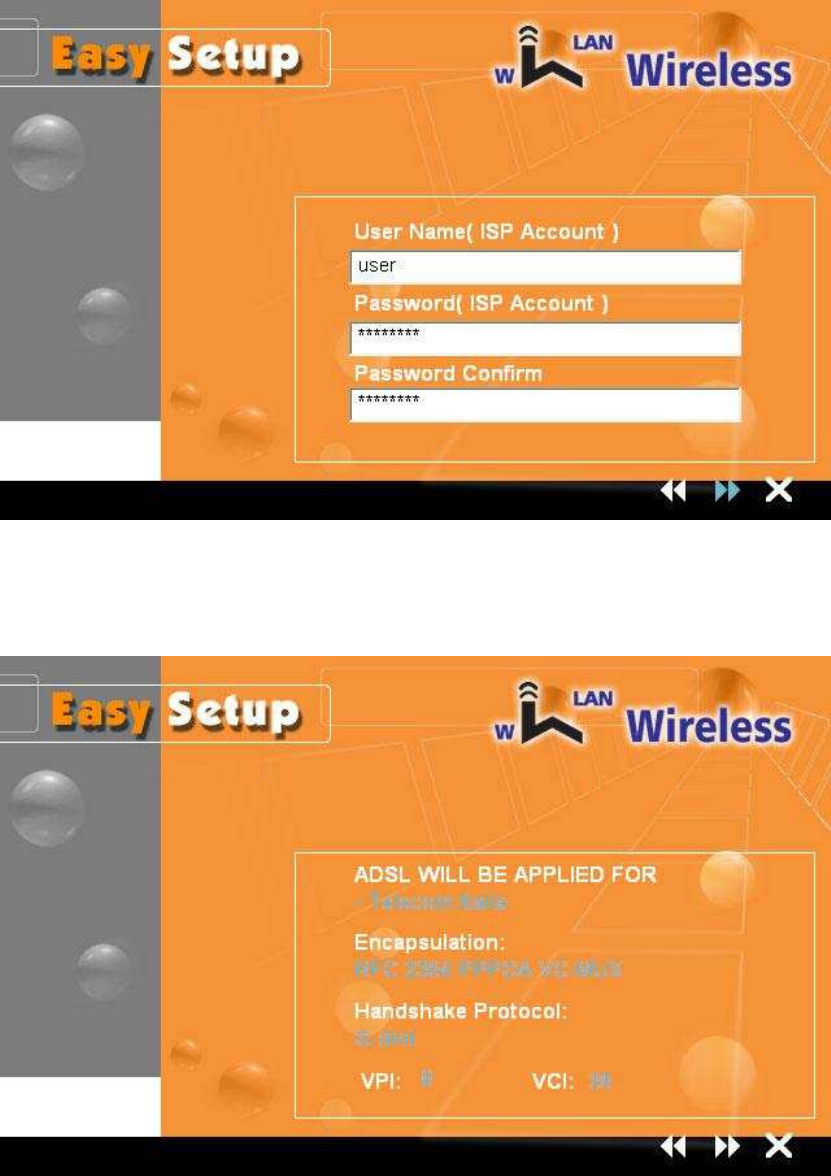
5
Step 5: After complete ISP selection, the window below appears and then enter your account
“User Name”, “Password”, and “Password Confirm”, then click “
” to next page.
Step 6: Confirm router settings and then click “
” to next page.
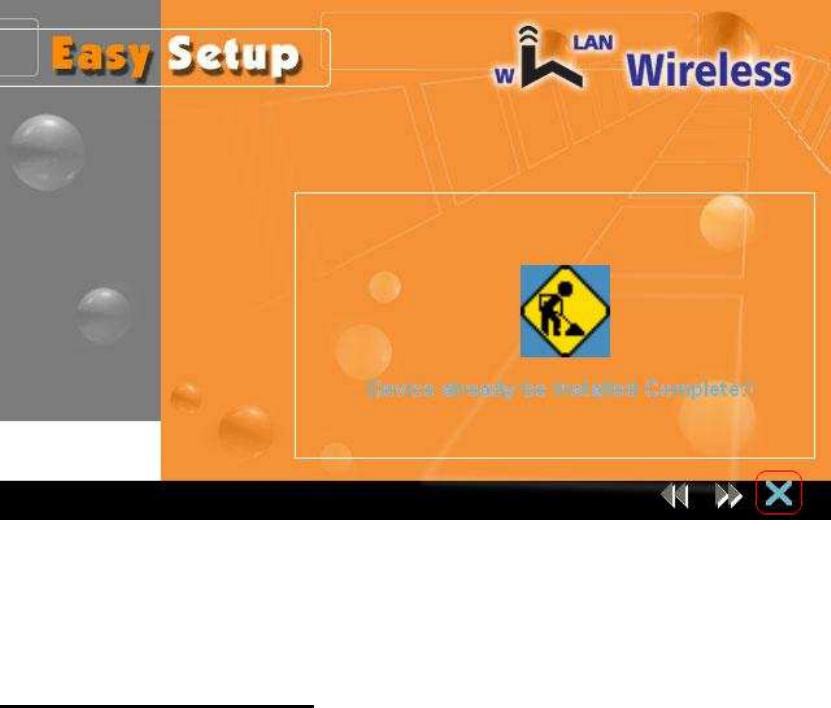
6
Step 7: Please wait for a while for applying your setting. After the setting is applied, clicks “
X
” to
exit the Setup program.
Attention: After you complete all settings, please wait 3 seconds for router reboot
automatically.
4.2 Quick Setup for “Other”
Step 1: If your country is not on the list, please click “Other” to go to Router Setup Utility
for the detail setting.
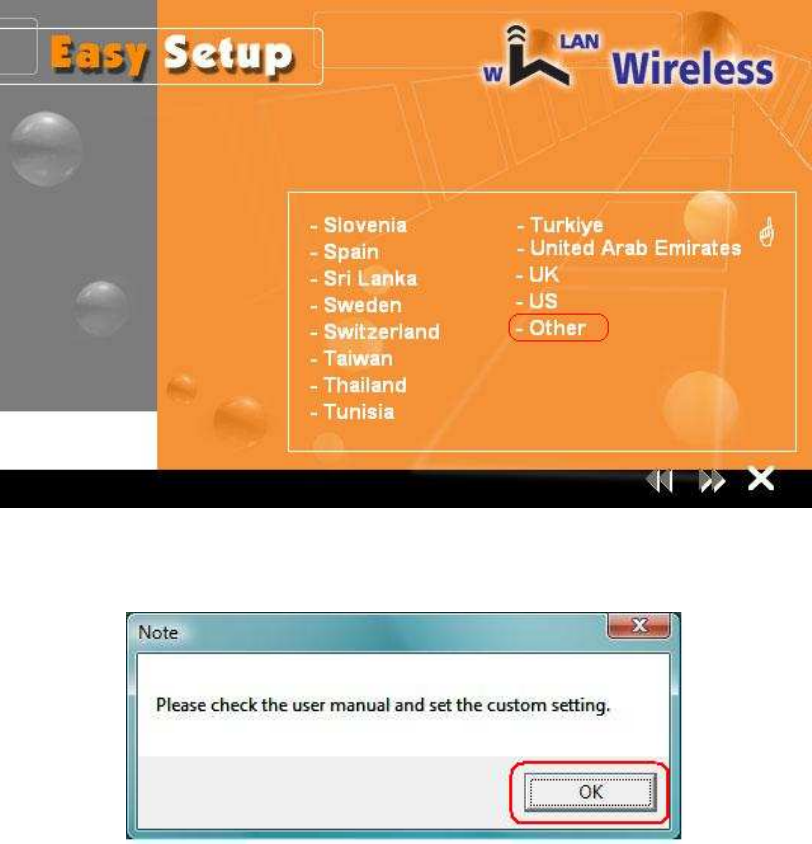
7
Step 2: After you click “Other”, then the windows below will appear and press “OK”.
Step 3: Entry of the User Name & Password will be displayed. Enter the default login User Name
& Password. The default login Name of the administrator is admin, and the default admin login
password is admin.
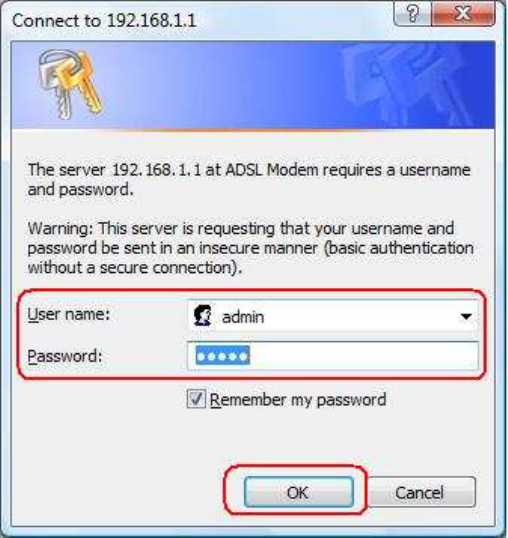
8
Step 4: Please refer to User Manual for the detail settings.
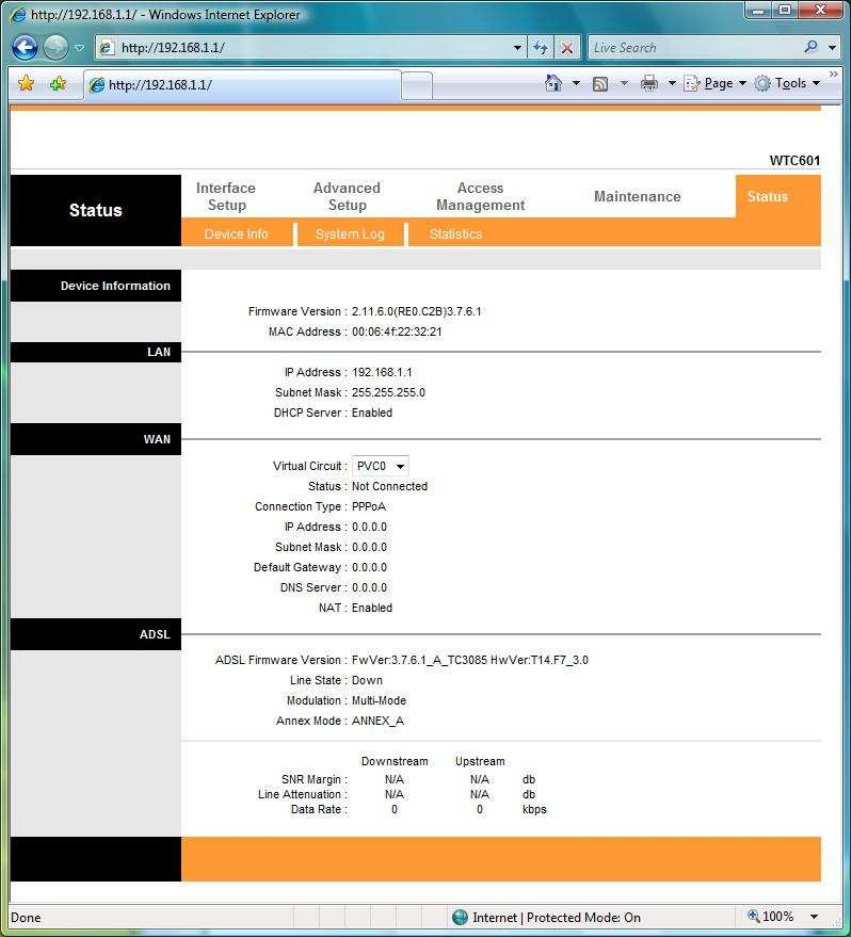
9
Steps to navigate the Web configuration from the Site Map are summarized below.
Click on Interface Setup to configure Internet and LAN functions.
Click on Advanced Setup to configure advanced features.
Click on Access Management to manage Internet access options.
Click on Maintenance to set a new password, the time zone, upgrade or reload firmware
and run diagnostic tests on the router
Click on Status to see router device information, system logs and performance statistics.
10
FCC Warning
This equipment has been tested and found to comply with the limits for a Class B digital device,
pursuant to part 15 of the FCC Rules. These limits are designed to provide reasonable protection
against harmful interference in a residential installation. This equipment generates, uses, and
can radiate radio frequency energy and, if not installed and used in accordance with the
instructions, may cause harmful interference to radio communication. However, there is no
guarantee that interference will not occur in a particular installation. If this equipment does cause
harmful interference to radio or television reception, which can be determined by turning the
equipment off and on, the user is encouraged to try to correct the interference by one or more of
the following measures:
- Reorient or relocate the receiving antenna.
- Increase the separation between the equipment and receiver.
- Connect the equipment into an outlet on a circuit different from that to which
- Consult the dealer or an experienced radio/TV technician for help. the receiver is connected.
FCC Caution: Any changes or modifications not expressly approved by the party responsible for
compliance could void the user’s authority to operate this equipment.
This device complies with Part 15 of the FCC Rules. Operation is subject to the following two
conditions: (1) This device may not cause harmful interference, and (2) this device must accept
any interference received, including interference that may cause undesired operation.
IMPORTANT NOTE:
FCC Radiation Exposure Statement:
This equipment complies with FCC radiation exposure limits set forth for an uncontrolled
environment. This equipment should be installed and operated with a minimum distance of about
eight inches (20cm) between the radiator and your body.
This transmitter must not be co-located or operated in conjunction with any other antenna or
transmitter.

11
EU Declaration of Conformity and Restrictions
Hereby, PRO-NETS Technology Corp., declares that this equipment complies with the essential
requirements and other relevant provisions of Directive 1999/5/EC.
This equipment is marked with the symbol and can be used throughout the
European community.
This indicates compliance with the R&TTE Directive 1999/5/EC and meets the relevant parts of
following technical specifications:
EN 300 328: Electromagnetic compatibility and Radio spectrum Matters (ERM); Wideband
Transmission Systems; Data transmission equipment operating in the 2,4GHz ISM band and
using spread spectrum modulation techniques; Harmonized EN covering essential requirements
under article 3.2 of the R&TTE directive.
EN 301 489-17: Electromagnetic Compatibility and Radio Spectrum Matters (ERM);
Electromagnetic Compatibility (EMC) standard for radio equipment and services; Part 17
Specific Conditions for Wideband Data and HIPERLAN Equipment.
EN 60950: Safety of Information Technology Equipment.
EN 50385: Product standard to demonstrate the compliances of radio base stations and fixed
terminal stations for wireless telecommunication systems with the basic restrictions or the
reference levels related to human exposure to radio frequency electromagnetic fields.
Marking by the symbol indicates that usage restrictions apply.
France - 2.4GHz for Metropolitan France:
In all Metropolitan départements, wireless LAN frequencies can be used under the following
conditions, either for public or private use:
· Indoor use: maximum power (EIRP*) of 100 mW for the entire 2400-2483.5 MHz frequency
band
· Outdoor use: maximum power (EIRP*) of 100 mW for the 2400-2454 MHz band and with
maximum power (EIRP*) of 10 mW for the 2454-2483 MHz band
Caution: Exposure to Radio Frequency Radiation.
To comply with RF exposure compliance requirements, for mobile configurations, a separation
distance of at least 20 cm must be maintained between the antenna of this device and all
persons.
This device is intended for use in the following European Community countries:
Austria Belgium Czech Republic Cyprus
Denmark Estonia France Finland
Germany Greece Hungary Ireland
Italy Iceland Luxemburg Latvia
Lithuania Malta Norway Netherlands
Portugal Poland Spain Sweden
Slovakia Slovenia United Kingdom